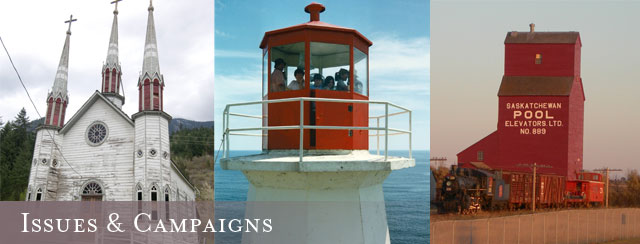
Heritage is conservation. Heritage-led regeneration is a powerful antidote to the crisis of consumerism and disposability.
 The National Trust believes that heritage conservation is a key part of sustainable communities. The message to maintain, repair and reuse, rather than to neglect, demolish and replace, links heritage conservation with healthy and affordable lifestyle choices such as walkability, cycling, and public transportation, and enable greater density, better energy performance and adaptive use in historic areas.
The National Trust believes that heritage conservation is a key part of sustainable communities. The message to maintain, repair and reuse, rather than to neglect, demolish and replace, links heritage conservation with healthy and affordable lifestyle choices such as walkability, cycling, and public transportation, and enable greater density, better energy performance and adaptive use in historic areas.
By rehabilitating and greening older buildings, communities are helping to combat climate change, and conserve precious natural resources.
The National Trust has promoted the connection between the environmental movement, sustainability, and heritage conservation since the 1970s: from advocacy and research on the issue of acid rain in the 1980s, to tackling urban sprawl in the 1990s and developing a Code of Ethics and Guidelines for Sustainable Tourism with the National Round Table on the Environment and the Economy (NRTEE) and the Tourism Industry Association of Canada.
The Four Pillars of Sustainability
Maintaining heritage buildings supports the four pillars of sustainability, which are cultural vitality, economic health, environmental responsibility and social equity:
- Conservation is more labour-intensive than new construction, which focuses on assembling new materials often trucked great distances. Rehab keeps more money in communities and supports the development of a skilled, well-paid workforce in the building trades.
- Older buildings are typically located in older neighbourhoods, which are compact and walkable.
- Conserving heritage buildings connects us to our past and strengthens our sense of community.
